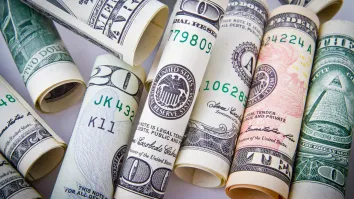
US investors bet on emerging Asian equities post one week of selling
Are they unfazed by US shutdown?
According to IG Singapore Daily, US investors bought into emerging Asian ETFs for a second day in a row after more than a week of selling. Investors put aside the implications of the shutdown and bet on emerging Asian markets as they see the US effect of this as contained. Ishares MSCI Philippines rallied over 2%, followed by Indonesia at 1.5% and India at 0.9%.
Here's more:
However, the longer this shutdown goes on, the broader the implications will be on global growth. While the bickering in Congress continues and does not appear to be coming to a conclusion any time soon, this uncertainty will put pressure on global markets.
Investors are coming to the realisation that this shutdown might go on longer than expected. On the jobs front, growth remains subdued in the US with the report overnight showing companies added 166k workers, which is less than forecast of 180k.
In a surprising performance, emerging Asian equities have outperformed the S&P500 in September. While the S&P500 returned 3%, the Jakarta composite - which investors have shunned - led the outperformance with a recovery of 9%. Thailand’s figure was at 7%, the Nifty was up 5% while Malaysia’s KLCI lagged with 2.4%.
While the Indonesian economy is clearly contracting, other regions such as the Philippines and China are expected to carry growth potential. Emerging Asian markets’ PE multiples have increased since the markets have recovered, except for the Chinese stocks. The rest are trading close to their five-year averages.
Indonesia’s merchandise trade balance returned to a surplus in August according to BPS (Statistics Indonesia) on 1 October. This could provide some relief to its currency.
The August trade surplus of US$132.4 million will relieve some of the pressure the rupiah has felt in the past three months, falling more than 10% against the US dollar.
However, there is concern towards long-term growth with both exports and imports falling on both a year-on-year and month-on-month bases. Exports fell 6.3% year-on-year to US$13.2bn while imports were down 5.7% to US$13bn.
The ADB raised its growth forecast for the Philippines this year to 7%, while cutting its prediction for developing Asia. Philippines central bank Governor Amando Tetangco said they are likely to exceed the upper end of the 7% target. The peso has remained mostly unchanged in the past three months.














